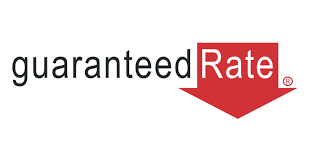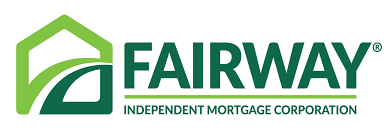Refinancing your mortgage means replacing an existing home loan with a new one. You typically follow the same steps you did for your purchase mortgage, except your new loan pays off your old loan.
Current 30 year-fixed mortgage refinance rates are averaging 4.61%
The current average rate for a 15-year fixed mortgage refinance is 3.85%
A surefire way to get the best mortgage rate is to shop around, but what does that really mean? Many factors determine your refinance rate, and a few extra tweaks to your finances could land you the best rate.
Here are some steps you can take on the path to the lowest refinance rates.
| Lender | LendingTree rating and "best of" category | Available features | Lender review |
|---|---|---|---|
  |    Overall refinance products | Minimum credit score: Not published Minimum down payment: 0% to 3.5% Available loan products and programs: Conventional, FHA, VA, jumbo, HELOC, interest-only and renovation loans | Read our review |
   Online mortgage experience for traditional bank | Minimum credit score: Not disclosed Minimum down payment: 0% to 3% Available loan products and programs: Conventional, FHA, VA, jumbo | Read our review | |
  Rate transparency | Minimum credit score: 620 Minimum down payment: 0% to 3.5% Available loan products and programs: Conventional, FHA, VA, jumbo | Read our review | |
  |   Variety of refinance products | Minimum credit score: 580 to 620 Minimum down payment: 0% to 3.5% Available loan products and programs: Conventional, FHA, VA, jumbo, HELOC, interest-only and renovation loans, reverse mortgages, physician loans | Read our review |
![]()
![]()


















It’s easy to get overwhelmed by all of the details involved in the mortgage refinance process, but following these six steps will get you on your way:
A typical refinance will cost between 2% and 6% of your loan amount, but there are different ways to pay the costs.
→ Ask for a no-closing-cost option. You’ll trade a lower closing cost bill for a higher interest rate if your lender offers a no-closing-cost refinance. The catch: You’ll spend more on interest charges over the life of your mortgage.
→ Add the costs to your loan amount. If you have enough home equity, you can borrow more and use the extra money to pay your costs. This is referred to as “rolling your costs” into your loan amount.
Ready to refinance your mortgage? Compare Free Refinance Offers
| Pros | Cons |
|---|---|
| You may get a lower rate | You’ll pay closing costs |
| You can save thousands in lifetime interest charges | You’ll lose equity if you increase your loan amount to cover closing costs |
| You may reduce your monthly payment | You might not break even on costs if you sell too soon |
| You can get rid of mortgage insurance | Your house may not appraise for what you think it’s worth |
| You can use equity to pay off debt or make home improvements | Your payment may become unaffordable if you shorten your term |
Refinancing your mortgage means replacing an existing home loan with a new one. You typically follow the same steps you did for your purchase mortgage, except your new loan pays off your old loan.
The most common types of mortgage refinance options are offered by conventional lenders, as well as lenders approved by the Federal Housing Administration (FHA), U.S. Department of Veterans Affairs (VA) and U.S. Department of Agriculture (USDA).
Rate-and-term refinance loans. Most homeowners choose this type of refinance to lower their rates or pay off their loans faster. One major perk: You can roll in your closing costs even if you have little to no equity in your home.
Cash-out refinance loans. With a cash-out refinance, you borrow more than you currently owe and pocket the difference between the two loans in cash. One drawback: You can’t borrow more than 80% of your home’s value unless you’re eligible for a VA cash-out refinance.
Streamline refinance loans. The streamline refinance option is exclusive to homeowners with government-backed loans from the FHA, VA or USDA, and typically doesn’t require a home appraisal or income documentation. To qualify, you must currently have an FHA, VA or USDA loan and prove the refinance will benefit you financially.
Your break-even point is a measure of how long it takes to recoup your refinance closing costs. Try our mortgage refinance calculator to see if refinancing makes sense.
APR stands for annual percentage rate and is a measure of your total refinance loan costs, including interest and origination fees. Your mortgage interest rate is the percentage you’ll pay as a fee for borrowing the money. The higher your APR is compared to your interest rate, the more you’re paying in total closing costs.
Mortgage refinance rates tend to be slightly more expensive than purchase mortgage rates. However, refinance rates differ from lender to lender, which is why it’s important to shop around and find a rate that’s competitive enough to replace your current mortgage rate.
Yes, as long as you’ll recoup the refinance closing costs you paid to get the lower rate. Don’t forget to use our refinance calculator to make sure the points are worth it.
Mortgage refinance requirements
The table below gives you a quick glance at the refinance requirements for credit score, debt-to-income (DTI) ratio and LTV ratio for the types of refinance loans listed above:
| Loan program | Refinance purpose | Credit score | LTV ratio | DTI ratio |
|---|---|---|---|---|
| Conventional | Rate and term | 620 | 97% | 45% to 50% |
| Cash out | 620 | 80% | 45% to 50% | |
| FHA | Rate and term | 500 to 580 | 97.75% | 43% |
| Cash out | 500 | 80% | 43% | |
| Streamline | N/A | N/A | N/A | |
| VA | Rate and term | No minimum, but lenders typically require 620 | 100% | 41% |
| Cash out | No minimum | 90% | 41% | |
| Streamline | No minimum | N/A | N/A | |
| USDA | Streamline | N/A | N/A | N/A |
To determine the best refinance lenders, we reviewed data from LendingTree’s 35 lender reviews and evaluated the lenders’ refinance loan programs and services.
Each lender review gives a rating between zero and five stars based on several features including digital application processes, available loan products and the accessibility of product and lending information. To evaluate refinance-specific factors, we awarded extra points to lenders that publish a wide variety of refinance rates online, offer the most conventional and government-backed refinance loan types and offer renovation refinance loans for homeowners that want to fix up their homes and roll the costs into one loan.
Our editorial team brought together the star ratings, as well as the scores awarded for refinance-specific characteristics, to find the lenders with a product mix, information and guidelines that best serve the needs of refinance borrowers. To be included in the “best of” roundup, lenders must offer mortgages in at least 35 states.